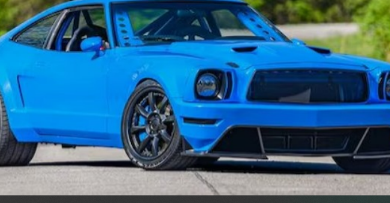
Rivian had been teasing its highly anticipated electric R2 platform for some time, and initially, we had a fairly good grasp of what to expect. It was clear that Rivian needed a smaller, more affordable model to serve as the cornerstone of its business viability. When the R2 was unveiled during the livestreamed event, it largely met those expectations.
Rivian
Essentially, the R2 presents itself as a compact version of Rivian’s R1S electric SUV, retaining the company’s distinctive design language and brand identity. With a starting price of $45,000, the R2 garnered considerable attention, especially with over 68,000 reservations made within the first 24 hours, albeit with a reservation fee of just $100 and the vehicle not set for release until the latter half of 2026.
However, while the R2 appears promising at first glance, there are concerns about Rivian’s decision to introduce a new model when its existing ones haven’t yet achieved profitability. We spoke with Rivian’s CEO RJ Scaringe and Chief Design Officer Jeff Hammoud to understand how the R2 platform builds upon the lessons learned from the R1 and what its future holds, including unexpected iterations like the R3 and R3X electric SUVs.
Learning from the challenges of bringing the R1T and R1S to market, Scaringe emphasized how the R2 benefits from the cumulative experience gained during the production process. He highlighted significant improvements in network architecture and electronic control unit (ECU) topology, aiming to streamline production and lower costs. Simplifying the battery pack design is a notable achievement, addressing previous concerns about production complexity.
Regarding production efficiency, Rivian’s decision to consolidate R2 production with the R1S and R1T at its Illinois plant reflects a strategic move to optimize resources and enhance production capacity. Despite concerns about meeting demand, Scaringe reassured that Rivian has refined the assembly process based on R1’s production experience.
Maintaining brand identity while reducing production costs posed a significant challenge for Hammoud. The design team focused on preserving key elements of Rivian’s identity while making necessary cost-saving adjustments, such as eliminating features present in the premium R1 model. Hammoud emphasized the importance of maintaining the user experience while optimizing costs.
However, some compromises were inevitable, particularly in off-road capabilities, where the R2 sacrifices certain features found in the R1 platform. Despite this, the R2 still offers respectable off-road performance, albeit not at the level of its predecessor.
While speculation about an R2 pickup truck circulates, Rivian remains tight-lipped about future plans. Scaringe hinted at the platform’s flexibility, suggesting potential expansions beyond the R2 and R3 models. As Rivian faces heightened scrutiny, the success of the R2 could define its future trajectory in the electric vehicle market.




